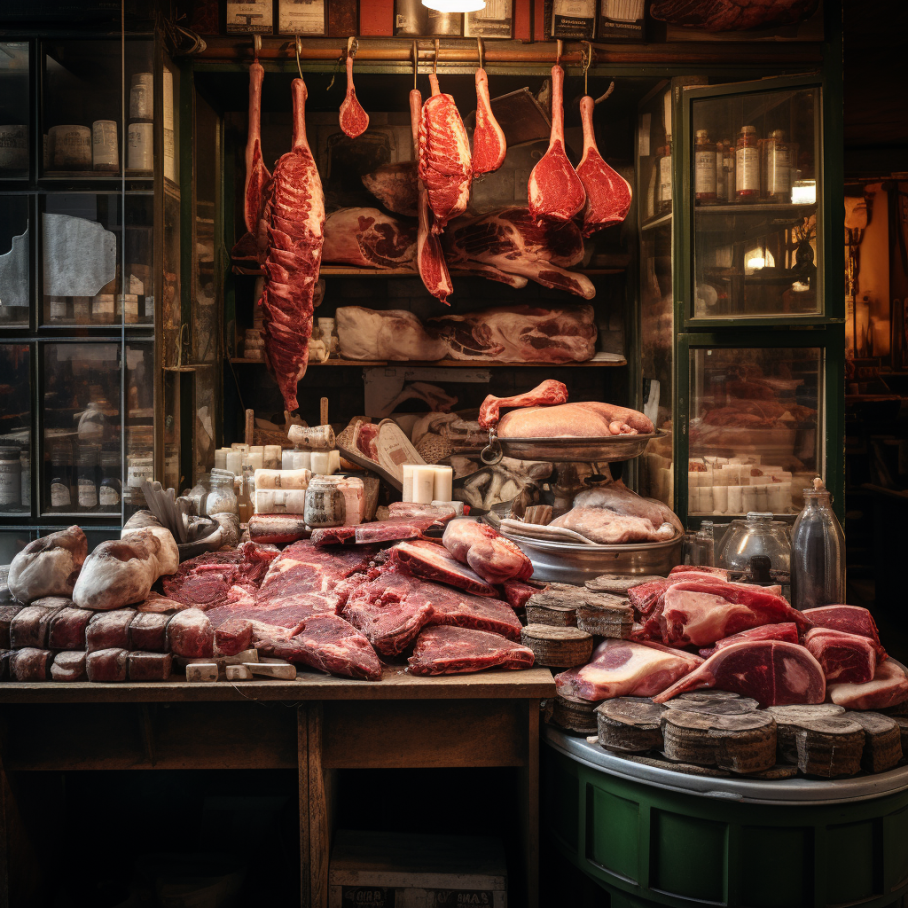
Offal is a vague term used to describe parts of the animal we Americans don’t eat. It includes the liver, brain, lungs, heart, tail, tongue, intestines, stomach and marrow. In the wild, carnivorous animals eat the internal organs before any other part of the kill. The alpha/leader usually claims these prime meats first: the heart, liver, bone marrow and kidneys. Muscle meat is left for the underlings. Many hunter-gatherer tribes commonly eat offal and give their domesticated animals the muscle. Internal organs are chock full of minerals, vitamins, protein and fat. Offal is a super nutritious addition to a healthy diet. Why then is this vitamin/mineral dense food shunned in Western society and usually left for our pets? Three reasons seem most likely:
1. Americans are squeamish about foods that resemble body parts like the tongue, heart, lungs, and brain. The textures of offal also differ from what we are accustomed to consuming.
2. The average American has no idea on how to cook offal. Most grocery stores do not sell it or hide it in the corner of the meat section.
3. We falsely believe organ meat is unhealthy and toxic.
Offal is vitamin dense, cheap and brimming with macronutrients. It is likely you have eaten offal in sausages or hotdogs. It is quite common for processed meat producers to pack these ‘unappetizing’ organs in their meat products. The National Hot Dog & Sausage Council (NHDSC) notes that hot dogs, be they turkey, pork or beef, begin with “trimmings.” According to the Food and Agriculture Organization of the United Nations (FAO),
“The raw meat materials used for precooked-cooked products are lower-grade muscle trimmings, fatty tissues, head meat, animal feet, animal skin, blood, liver and other edible slaughter by-products.”
Awfully Good Offal:
1. Liver is the king of organ meats. It’s one of the most nutrient-dense foods in existence and contains many key nutrients that are difficult to get elsewhere. It is an excellent source of high-quality protein, vitamin A, several B vitamins and is an excellent source of folic acid, choline, and iron. The liver is the number one food source of copper and contains heart-protecting CoQ10.
Side Note: The liver does not store toxins (those are mostly stored in fatty deposits). It is not a storage organ for toxins but it does store many important nutrients including vitamins A, D, E, K, B12 and folic acid, and minerals such as copper and iron.
2. Heart is an excellent source of a number of nutrients, including thiamin, folate, selenium, phosphorus, zinc and several of the B vitamins. In addition, beef heart contains amino acids that are thought to improve metabolism and compounds that promote the production of collagen and elastin. It is the best food source for CoQ10.
3. Bones and Marrow are not just for the dogs anymore. Both bone and marrow contain an abundance of calcium, phosphorus, and magnesium. Both are good sources of collagen, gelatin, chondroitin sulfate, vitamins A and D, vitamins K1, K2 and various crucial amino acids. Bones offer a tremendous nutritional bounty. Moreover, the marrow has the most nutrient-dense fat available anywhere.
It is easy to add offal to your diet. Many top restaurants serve it as an entree or appetizer. Add bone broth to your rice, stews, chili or sauces. Add some liver, heart, and marrow into your next burger mix. The NYC restaurant Hearth serves a brilliant offal burger with grass-fed organic brisket, chuck, heart, and liver. It is delicious. My mom used to send me to school with liverwurst. I still remember the horrified looks on my friends’ faces when I unpacked my lunch. But I loved it and still do. Eating offal once a week in addition to your regular healthy diet will take care of most of your multivitamin and mineral needs.
*As always look for humanely raised meat that has been pastured fed.

BONUS: My Mom's Chopped Liver Recipe
Ingredients:
1 pound chicken livers, trimmed and cleaned
2 medium onions, finely chopped
2 hard-boiled eggs
4 tablespoons schmaltz (rendered chicken fat)
Salt and pepper to taste
Optional garnish: chopped fresh parsley or chopped sautéed onions
Instructions:
In a skillet, heat 2 tablespoons of schmaltz or vegetable oil over medium heat. Add the chopped onions and sauté until they become translucent and golden brown. Remove the onions from the skillet and set them aside.
In the same skillet, add the remaining 2 tablespoons of schmaltz or vegetable oil. Add the chicken livers and cook them over medium heat until they are browned on the outside but still slightly pink on the inside. Avoid overcooking, as livers can become tough.
Transfer the cooked chicken livers to a cutting board and allow them to cool slightly. Once cooled, chop the livers into small pieces.
Place the chopped chicken livers, sautéed onions, and hard-boiled eggs in a food processor or blender. Pulse the mixture until you achieve a coarse consistency. Don't overprocess; you want a slightly chunky texture.
Season the mixture with salt and pepper to taste. Adjust the seasoning according to your preference.
Transfer the chopped liver mixture to a bowl and refrigerate for at least a few hours, preferably overnight, to allow the flavors to meld together.
Before serving, garnish with chopped fresh parsley or sautéed onions if desired. Serve chilled with crackers, toasted bread, or matzo.







Comments